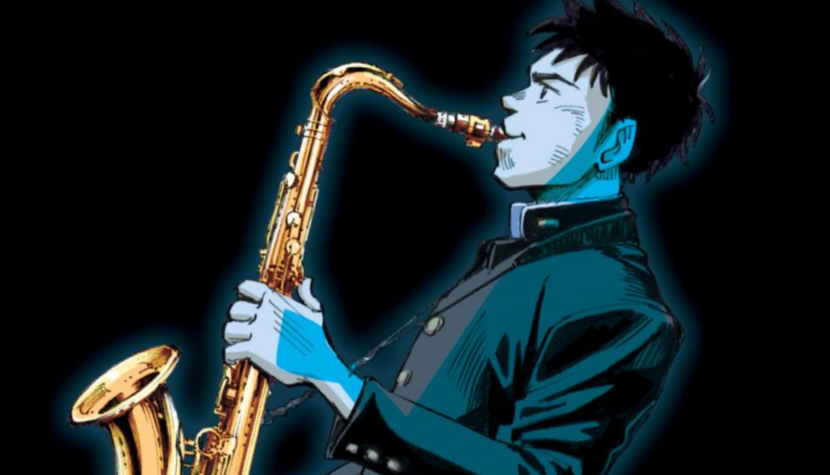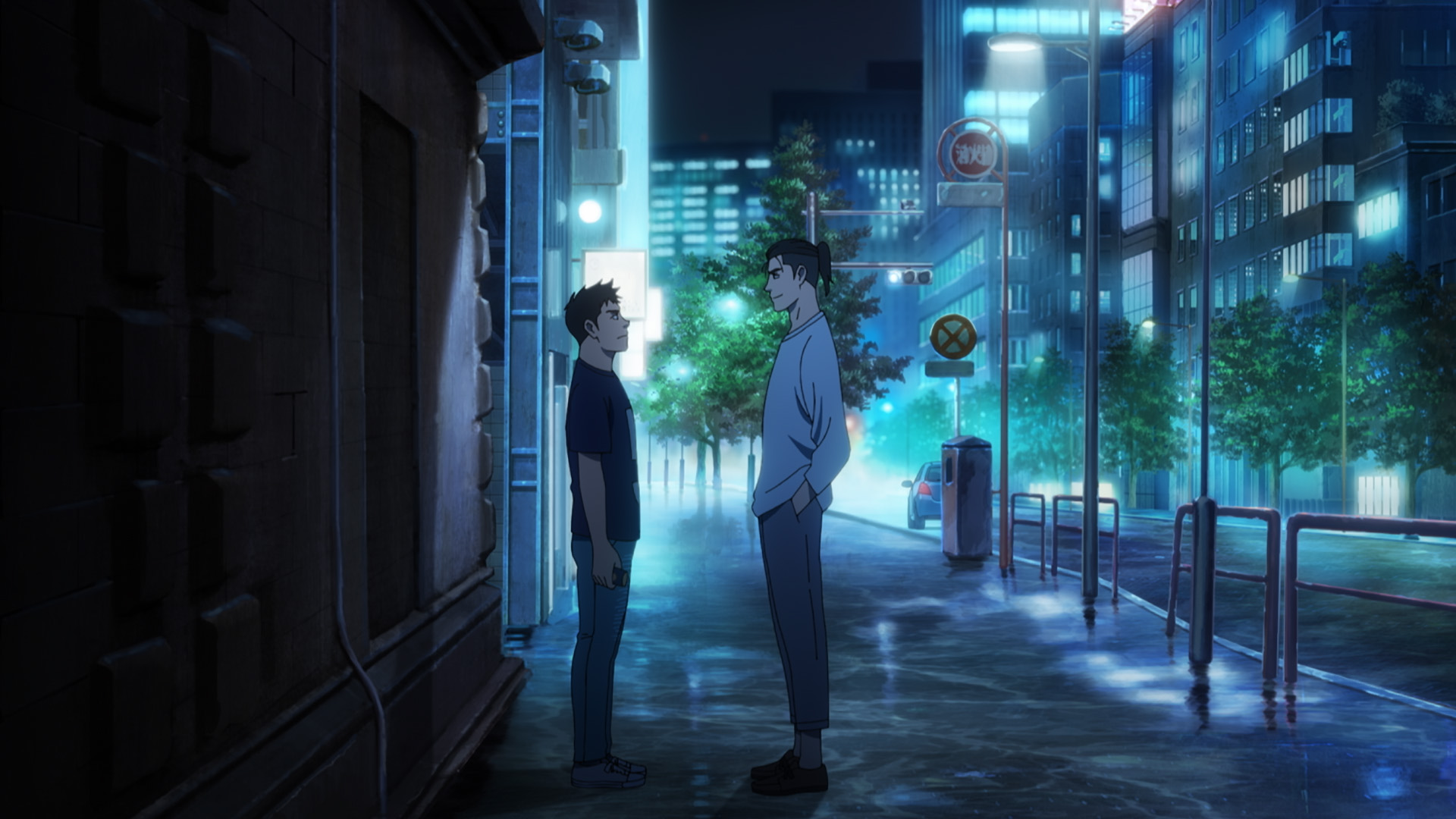BLUE GIANT. Jazz is life, life is jazz [REVIEW]

In one of the scenes in La La Land, when Mia tells Sebastian that she doesn’t like jazz, he throws up his hands in despair. He then takes her to a jazz club and, while a concert is going on in the background, passionately declares his love for his favorite music. “There’s room in it for conflict and compromise. Something new every time, every night. And that’s very, very exciting!” Damien Chazelle‘s film didn’t make me love jazz. It also didn’t make me understand its phenomenon. Mainly because the American director is ultimately more interested in human love, tested by time and circumstances. Yuzuru Tachikawa, on the other hand, is the opposite – Blue Giant, an adaptation of Shinichi Ishizuki’s popular manga, is steeped in jazz from beginning to end, and the relationship between people and music plays the leading role.
Dai Miyamoto dreams of a music career. But not just any career – he doesn’t want to be “the best saxophonist in town,” but the greatest jazz musician in the world. To achieve this, he practices every day by the river in his hometown of Sendai. When he feels ready, he buys a one-way ticket to Tokyo, Japan’s jazz hub. Armed only with his saxophone, enormous enthusiasm, and even greater ambitions – from zero to hero. In the capital, Dai meets a young, talented pianist, Yukinori Sawabe, whom he persuades to form a band. The duo quickly becomes a trio when a novice drummer, and also the protagonist’s roommate, Shunji Tamada, joins them.

Blue Giant is not a narratively complicated film. One shouldn’t expect great plot twists from Tachikawa’s anime. The viewing pleasure lies in something else: slowly observing the successive stages of the protagonists’ music careers, who start by performing in a small bar and end up in the most exclusive venue in Japan. In the meantime, they organize more rehearsals and lively discussions about music, perfecting their own skills. Screenwriter Eito Nambo – performing under the pseudonym “Number 8” – has deftly managed to outline the characters of all three protagonists, primarily through their relationships with music. Dai and Yukari share talent and perfectionism but are divided by idealism. The main character approaches jazz in an almost religious way. A stage performance is for him the equivalent of “baring his soul,” and the fully improvised solo part is the most important element of every concert. Yukari thinks about music in completely different terms. He has been practicing piano since he was four years old, following in his parents’ footsteps. It’s not about self-expression for him, but about achieving mechanical perfection – that’s why each of his solos sounds similar. The character unlocks his true potential only when, under the influence of crushing criticism, he reevaluates his musical ideals, moving closer to his colleague’s romantic vision.
However, Tachikawa’s film would be a mere shadow of itself without an idea for staging the numerous concert sequences. Fortunately, it is at these moments that Blue Giant takes a second breath, becoming a truly exciting film. The screen fills with fantastical shapes, pulsating to the rhythm of Hiromi Uehara’s music. The visuals seem to respond to the protagonists’ jazz improvisations: engaging in dialogue with them, also improvising. The audience’s reactions mix with close-ups of the musicians’ focused faces. Sweat pours in torrents onto the piano keys and drum cymbals. Because playing an instrument is also, and perhaps above all, a great physical effort: numerous sacrifices, swollen, plaster-covered fingers. During the concerts, there are also flashbacks – played out without words, solely through images – that subtly inform us about what the protagonists are currently experiencing. Where their thoughts are escaping to, what they want to convey through their music. And even if the 3D animation used at these moments looks a bit clumsy and slightly disrupts the audiovisual trance, the performance sequences remain the strongest argument of Tachikawa’s film. An experience that, while it didn’t make me love jazz, finally – what a relief – made me understand its phenomenon.

“Jazz bands aren’t like rock bands. They don’t stick together until old age, but break up at the first opportunity,” Yukari remarks at one point. And indeed, in the finale, we witness the protagonists’ last concert together. We know that all will go their separate ways afterward. Only Dai will reach the musical summit, as greatness was written for him from the beginning. A bit like in Thomas Bernhard’s The Loser – contact with genius intimidates, forcing a look at one’s own skills from a different perspective. Not everyone can withstand such a look. Meanwhile, the genius follows his own path, shining the brightest light: his life is often short but intense. In jazz terminology, as one of the supporting characters informs us at the end of the film, such talents are called “blue giants.” Stars that achieve absolute brightness, then turn into supernovae and die, exploding spectacularly. For a moment, however, the firmament belongs exclusively to them – and no one can take that feeling away from them.

